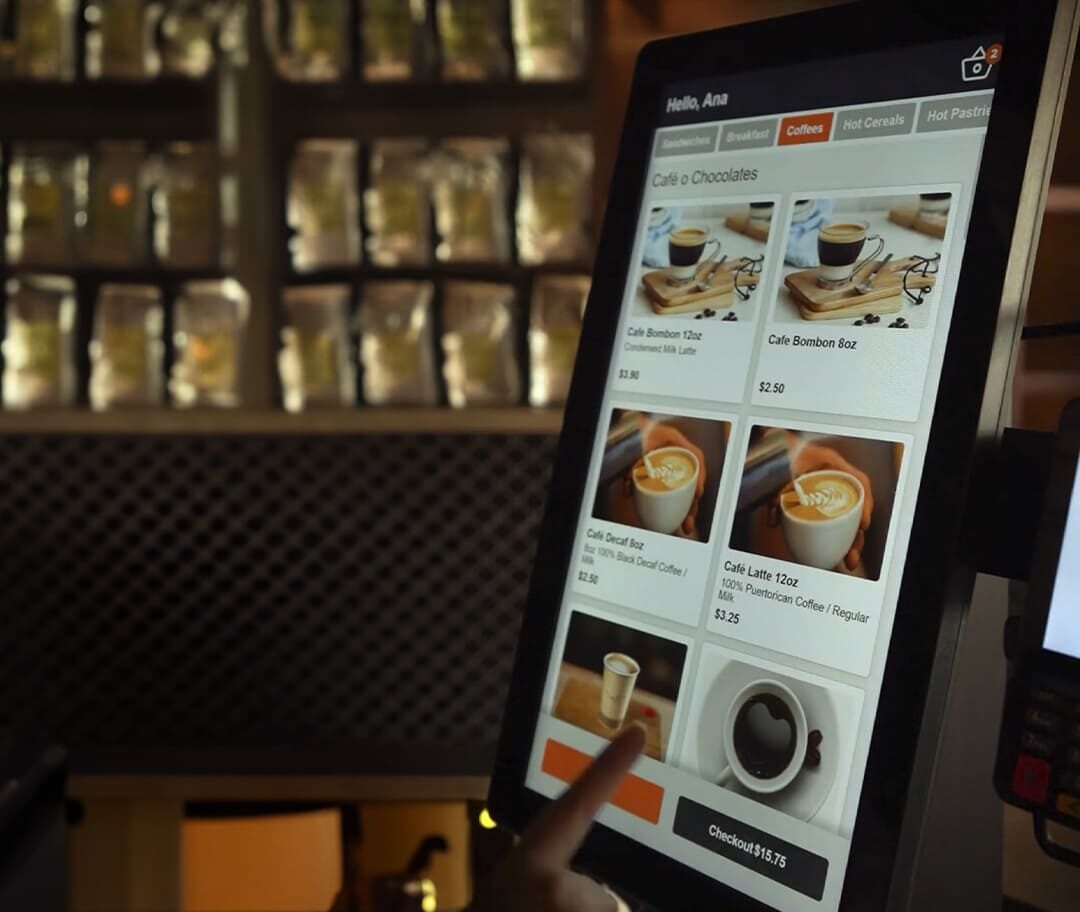The self-service kiosk has become a key technology in various industries across the globe, and the Philippines is no exception. As digital transformation continues to make waves in the business landscape, self-service kiosks are quickly becoming a staple in restaurants, retail stores, and other service industries. With their ability to streamline operations, reduce costs, and enhance customer experiences, these kiosks are revolutionizing the way businesses operate. But what exactly is driving this shift, and how are these kiosks reshaping the Philippine market?
How Self-Service Kiosks Enhance Customer Experience
The primary appeal of self-service kiosks lies in their ability to significantly improve the customer experience. By providing an intuitive, user-friendly interface, these kiosks enable customers to place orders, pay bills, and even customize their choices—all without needing to interact with a cashier. In the Philippines, this is especially important, where long wait times and crowded queues can lead to frustration. The self-service kiosk is designed to eliminate these issues, allowing customers to move through the ordering process quickly and efficiently.
With self-service kiosks, customers have full control over their orders. They can browse menus at their own pace, select items, customize options like ingredients or toppings, and proceed to checkout. This not only speeds up the overall process but also reduces the potential for errors, which can often happen when orders are taken by human cashiers. Additionally, customers can make payments seamlessly through integrated payment systems, further reducing friction in the transaction process.
The ability to tailor an order according to individual preferences is another major draw. Customers no longer have to worry about miscommunication or feeling rushed when making special requests. For example, a diner at a restaurant can easily modify their meal by selecting different options, ensuring a more personalized dining experience. This level of convenience and control has made self-service kiosks a popular choice in fast food chains, casual dining spots, and even high-end restaurants across the Philippines.
Benefits of Self-Service Kiosks for Businesses
For businesses in the Philippines, self-service kiosks offer a range of benefits that directly impact their operations and bottom line. First and foremost, they significantly reduce labor costs. With customers managing their own orders, businesses need fewer staff members on the front lines, which helps lower overhead costs. This becomes particularly valuable during peak hours, where kiosks can handle a high volume of orders with ease, freeing up employees to focus on other important tasks, such as food preparation or customer service.
Self-service kiosks also help businesses streamline their order processing. Orders placed through kiosks are directly transmitted to the kitchen display system (KDS), reducing the chance of errors that often occur when orders are written down by hand or input into a traditional point-of-sale system. The automation ensures that orders are processed quickly and accurately, leading to faster delivery times and improved customer satisfaction.
The integration of kiosks with kitchen display systems allows restaurants to manage multiple orders simultaneously, ensuring that no order is lost in the shuffle. In addition to order accuracy, this integration enables businesses to monitor cooking times and adjust priorities based on real-time demand, leading to smoother operations during busy periods.
Moreover, the presence of self-service kiosks gives businesses a competitive edge. Customers who value convenience and efficiency are more likely to return to a restaurant or store that offers modern self-service options. This enhances customer loyalty, boosts repeat business, and strengthens a brand’s reputation as an innovative and customer-focused company.
Types of Self-Service Kiosks in the Philippines
Self-service kiosks come in various forms and configurations, depending on the specific needs of a business. In the Philippines, these kiosks are most commonly seen in restaurants, retail stores, and even airports. However, the technology is adaptable and has found applications in a range of other sectors, from cinemas to healthcare facilities.
For restaurants, there are standalone kiosks that allow customers to place and pay for orders independently. These kiosks often feature large, interactive screens with high-definition graphics and touch functionality, making it easy for customers to navigate menus and customize their selections. Some restaurants also offer kiosk systems that are integrated into their existing point-of-sale infrastructure, allowing staff to oversee the ordering process from a central system.
Retail businesses in the Philippines are also adopting self-service kiosks to improve customer convenience. These kiosks often allow customers to browse and purchase products, check stock availability, and even print receipts. In some cases, kiosks are positioned near checkout counters, where customers can scan their own items and pay for them without waiting in line.
Airports and transportation hubs are another growing area for self-service kiosks. In these locations, kiosks allow travelers to check in for flights, print boarding passes, and access other travel-related services, streamlining operations and reducing long queues. This is especially beneficial in high-traffic locations where speed and efficiency are crucial for maintaining customer satisfaction.
How Self-Service Kiosks Are Impacting the Philippine Market
The Philippine market has seen rapid adoption of self-service kiosks in recent years, and the trend shows no signs of slowing down. As digital adoption increases across the country, both businesses and consumers are embracing the convenience and efficiency that these kiosks offer. Major cities like Manila, Cebu, and Davao have become hotspots for self-service kiosk installations, with many businesses eager to stay ahead of the curve.
The rise of self-service kiosks aligns perfectly with the Philippines’ broader digital transformation initiatives, which aim to make the country more tech-savvy and globally competitive. The government’s push toward improving digital infrastructure has paved the way for the widespread use of technologies like self-service kiosks in industries such as food service, retail, and transportation. With a growing number of internet users and mobile connectivity, Filipinos are increasingly comfortable using digital systems for everyday tasks, making self-service kiosks an ideal solution.
The pandemic played a significant role in accelerating the adoption of self-service technology in the Philippines. As businesses sought ways to reduce in-person interactions, self-service kiosks became an essential tool in maintaining social distancing protocols. Restaurants and retail outlets turned to kiosks as a means to minimize contact between customers and staff, ensuring a safer, more hygienic environment.
Local companies are also leading the charge in providing self-service kiosk solutions in the Philippines. With the rise of technology-focused startups, businesses in the country now have access to a variety of local kiosk providers, making the technology more affordable and accessible than ever before. These local solutions often come with personalized customer service, ensuring that businesses receive the support they need during installation and beyond.
Challenges and Considerations When Implementing Self-Service Kiosks
While self-service kiosks offer numerous benefits, businesses in the Philippines must consider a few challenges before implementing them. One of the main concerns is the initial investment. Setting up self-service kiosks, especially those that are integrated with existing point-of-sale and kitchen display systems, can be costly. However, many businesses find that the long-term benefits, such as reduced labor costs and increased customer satisfaction, far outweigh the upfront expenses.
Another consideration is the technological infrastructure. Businesses need to ensure that their networks can support the kiosks and that the software integrates seamlessly with other systems. In rural areas or locations with poor internet connectivity, this could pose a challenge. However, as internet access continues to improve in the Philippines, this barrier is gradually being overcome.
User-friendliness is another important factor. Self-service kiosks need to be accessible to all customers, including those who may not be familiar with touchscreen technology. Businesses must ensure that their kiosks are designed with intuitive interfaces and, ideally, offer multilingual support to cater to the diverse customer base in the Philippines.
The Future of Self-Service Kiosks in the Philippines
Looking ahead, the future of self-service kiosks in the Philippines appears bright. As businesses continue to recognize the benefits of this technology, we can expect to see more widespread adoption across various sectors. Innovations in artificial intelligence, automation, and machine learning are likely to further enhance the capabilities of self-service kiosks, making them even more efficient and personalized.
Self-service kiosks are poised to become even more sophisticated, with features such as facial recognition, voice command capabilities, and predictive analytics. These advancements will allow businesses to offer highly tailored experiences to their customers, improving both satisfaction and loyalty.
As the Philippine market becomes more accustomed to self-service technology, businesses that embrace these innovations will be well-positioned for success. The self-service kiosk is not just a trend; it is a technological shift that will define the future of customer interactions across industries in the Philippines.
Frequently Asked Questions
1. What are the key advantages of using a self-service kiosk in the Philippines?
Self-service kiosks help businesses reduce wait times, improve order accuracy, and cut labor costs, all while providing a more streamlined and efficient experience for customers.
2. Can self-service kiosks be integrated with existing point-of-sale systems?
Yes, self-service kiosks can be seamlessly integrated with point-of-sale systems to streamline order processing and reduce errors.
3. Are self-service kiosks suitable for small businesses in the Philippines?
Absolutely! Small businesses can benefit from self-service kiosks by improving customer service and operational efficiency, making it easier for them to compete with larger establishments.
4. How secure are self-service kiosks for handling payments?
Self-service kiosks are equipped with secure payment gateways that protect customer data, ensuring safe transactions at all times.
5. Do self-service kiosks support different languages for diverse customer bases?
Yes, many self-service kiosks offer multilingual options, allowing businesses to cater to a diverse customer base and improve accessibility.











